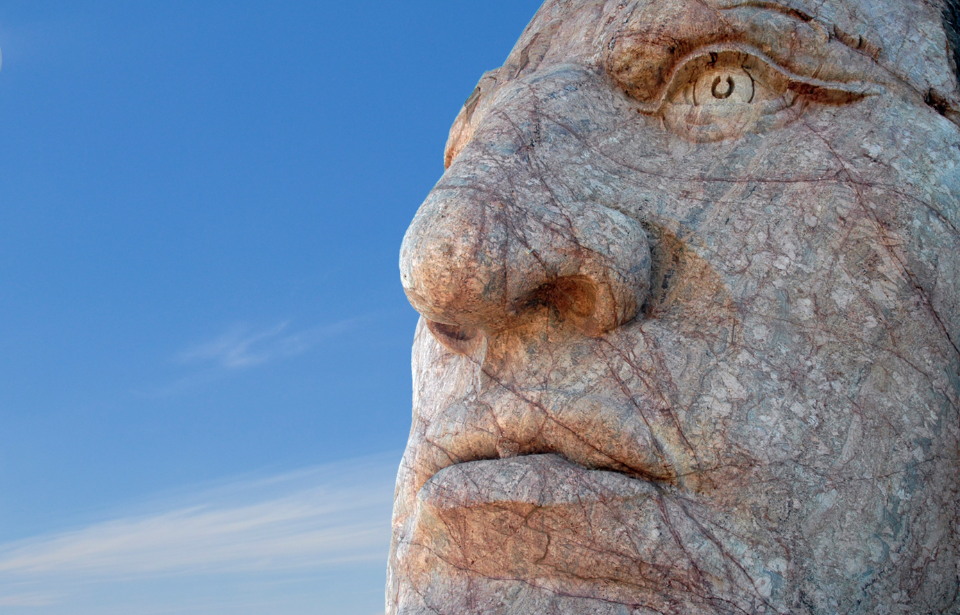The history behind the Crazy Horse Memorial in Black Hills, South Dakota, is nearly as interesting as the history of Crazy Horse himself. A legendary Native American, members of his family commissioned a massive sculpture in his likeness that is still in the process of being made. As of today, it is the largest in-progress statue in the world.
Crazy Horse’s legacy

Crazy Horse was a legendary war leader of the Oglala Lakota, born around 1840. He was the son of a medicine man and was raised by the women of his family. By the time he reached his teenage years, he had proven himself to be a skilled warrior. During a time of contention between Native Americans and colonizers, Crazy Horse successfully fought the US government and its soldiers against the encroachment of their territories. He rode into battle with a single hawk feather in his hair, a rock behind his ear, and a lightning symbol on his face. Crazy Horse has always been remembered as someone who put the needs of his people above his own.
In 1877, Crazy Horse met with members of the US federal government at Fort Robinson under a flag of truce to discuss negotiations. However, these negotiations broke down after the translator incorrectly translated what Crazy Horse was trying to say. Soldiers then detained him and escorted him to the jail. When he realized what was happening, he struggled and drew his knife. This prompted another soldier to lunge at Crazy Horse with his bayonet, inflicting a fatal wound on him. Not long after the injury, Crazy Horse died.
Henry Standing Bear’s initiative to start the memorial

In the late 1930s, Crazy Horse’s maternal cousin and Oglala Lakota chief, Henry Standing Bear, recruited Polish-American sculptor Korczak Ziolkowski to build a memorial to Crazy Horse in the Black Hills of South Dakota. Ziolkowksi had previously worked on Mount Rushmore under Gutzon Borglum, whom Luther Standing Bear, Henry Standing Bear’s brother, wrote to in 1931 advocating for Crazy Horse to be added to the Rushmore memorial.
In his letter, Luther Standing Horse wrote how it would be “most fitting to have the face of Crazy Horse sculpted there. Crazy Horse is the real patriot of the Sioux tribe and the only one worthy to place by the side of Washington and Lincoln.” However, Borglum never replied. When Henry Standing Bear reached out to Ziolkowski, the latter accepted the commission and spent three weeks with Henry Standing Bear, learning all about Oglala history and culture.
One of the important factors about the project was that it did not accept any government funding and instead was privately funded. In order to get permission for the barren mountain in the Black Hills, Henry Standing Bear offered his entire 900 acres of fertile land to the federal government. His offer was accepted, and while they tried on multiple occasions to offer $10 million for the project, government funding has never been accepted for the project.
It’s going to be a work in progress for a while

When Ziolkowski died in 1982, his wife, Ruth, took over the project as CEO and made some pretty sizeable changes to the way things would be carried out. Her husband had wanted the horse to be completed first, but Ruth made the switch to focus on the face of Crazy Horse. Her thinking was that by completing the face, there would be an increase in interest around the memorial, which would raise tourism and funding for the project. The memorial has continued on as a family affair, as after Ruth died in 2014, some of her children and grandchildren took over to continue working on the project.
Completion of the Crazy Horse memorial is open-ended – when construction first started in 1948, it was estimated that the project would be completed in 30 years’ time. That clearly didn’t happen, and so timelines have been compartmentalized to monitor progress. As of 2022, the hand, arm, shoulder, hairline, and top of the horse’s head have been estimated to be finished by 2037.
